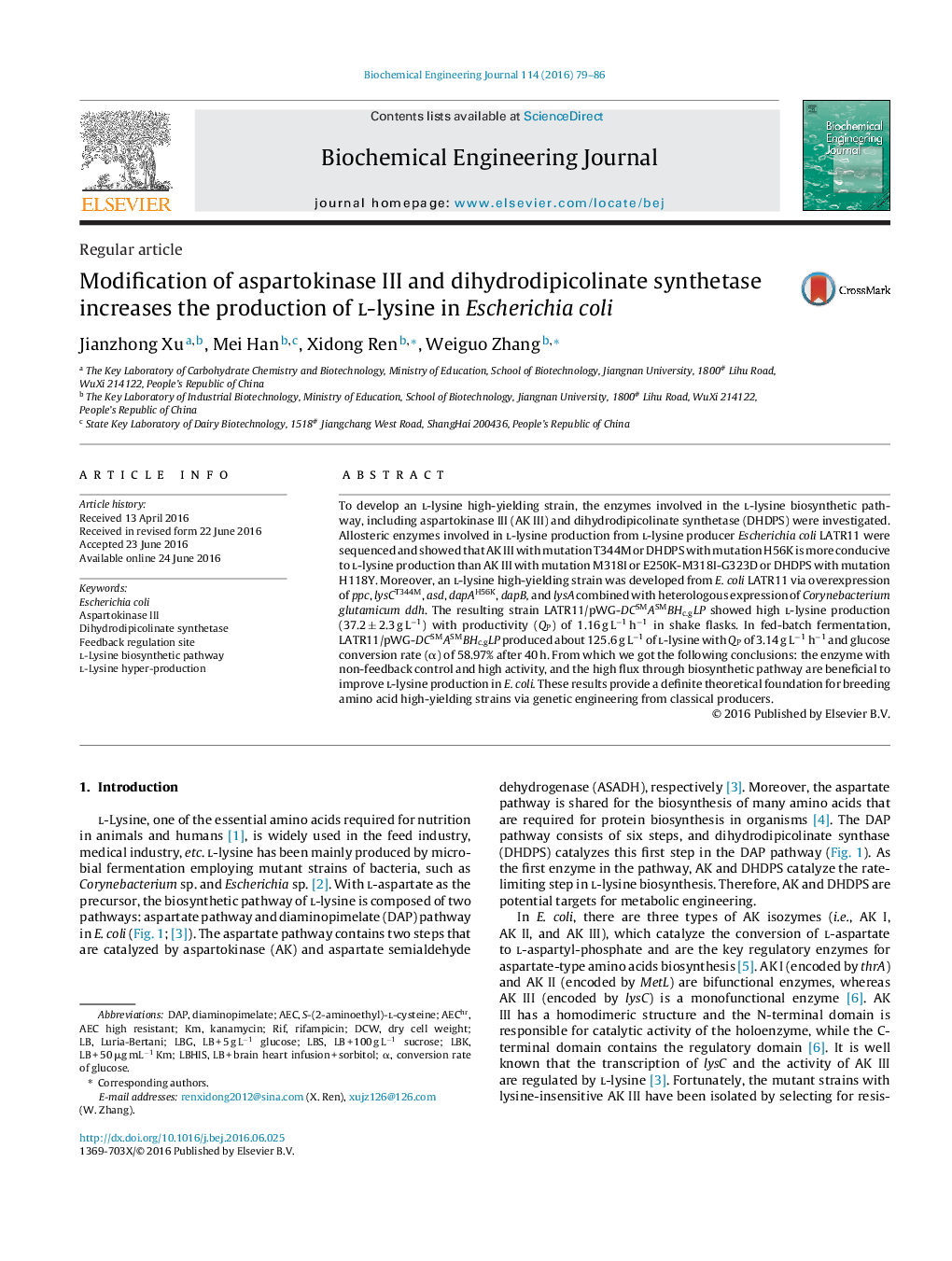| Article ID | Journal | Published Year | Pages | File Type |
|---|---|---|---|---|
| 2676 | Biochemical Engineering Journal | 2016 | 8 Pages |
•Metabolic engineering E. coli LATR11 increases lysine production.•AK III with mutation T344M shows non-feedback control and high-activity.•DHDPS with mutation H56K shows non-feedback control and high-activity.•Increasing flux through biosynthetic pathway benefits to improve lysine production.•Heterologous expression of ddh in strain LATR11 benefits to increase productivity.
To develop an l-lysine high-yielding strain, the enzymes involved in the l-lysine biosynthetic pathway, including aspartokinase III (AK III) and dihydrodipicolinate synthetase (DHDPS) were investigated. Allosteric enzymes involved in l-lysine production from l-lysine producer Escherichia coli LATR11 were sequenced and showed that AK III with mutation T344M or DHDPS with mutation H56K is more conducive to l-lysine production than AK III with mutation M318I or E250K-M318I-G323D or DHDPS with mutation H118Y. Moreover, an l-lysine high-yielding strain was developed from E. coli LATR11 via overexpression of ppc, lysCT344M, asd, dapAH56K, dapB, and lysA combined with heterologous expression of Corynebacterium glutamicum ddh. The resulting strain LATR11/pWG-DCSMASMBHc.gLP showed high l-lysine production (37.2 ± 2.3 g L−1) with productivity (QP) of 1.16 g L−1 h−1 in shake flasks. In fed-batch fermentation, LATR11/pWG-DCSMASMBHc.gLP produced about 125.6 g L−1 of l-lysine with QP of 3.14 g L−1 h−1 and glucose conversion rate (α) of 58.97% after 40 h. From which we got the following conclusions: the enzyme with non-feedback control and high activity, and the high flux through biosynthetic pathway are beneficial to improve l-lysine production in E. coli. These results provide a definite theoretical foundation for breeding amino acid high-yielding strains via genetic engineering from classical producers.
